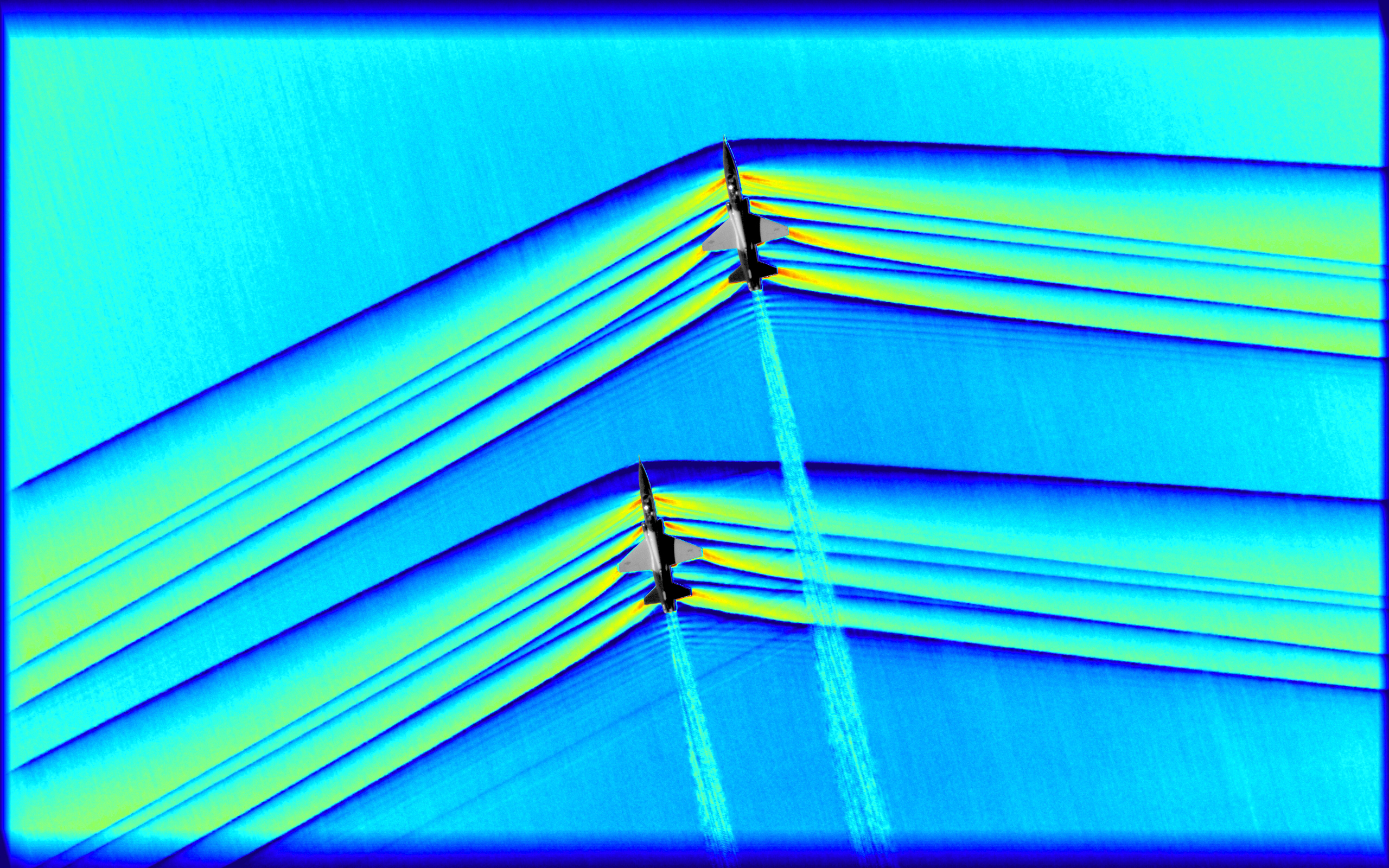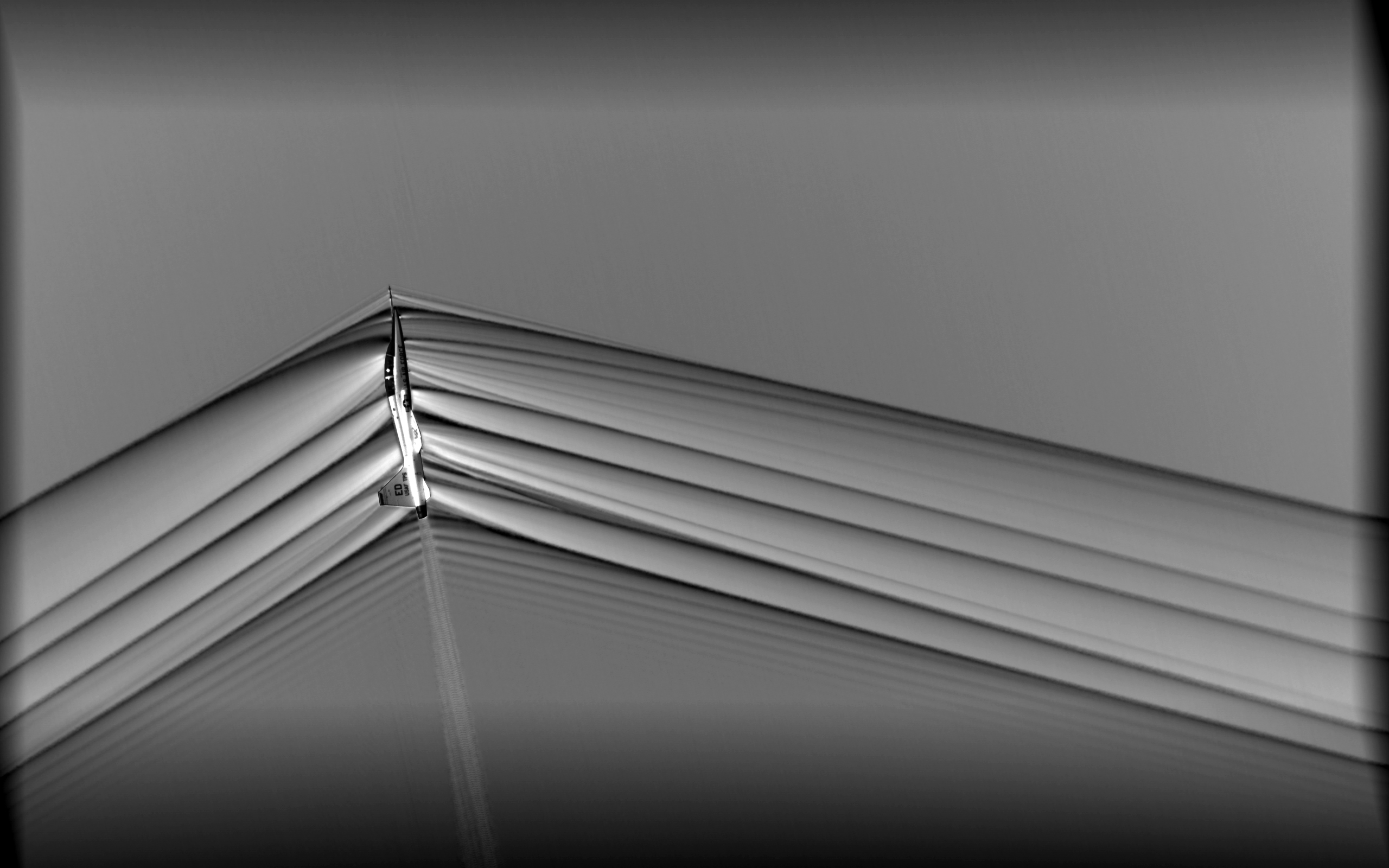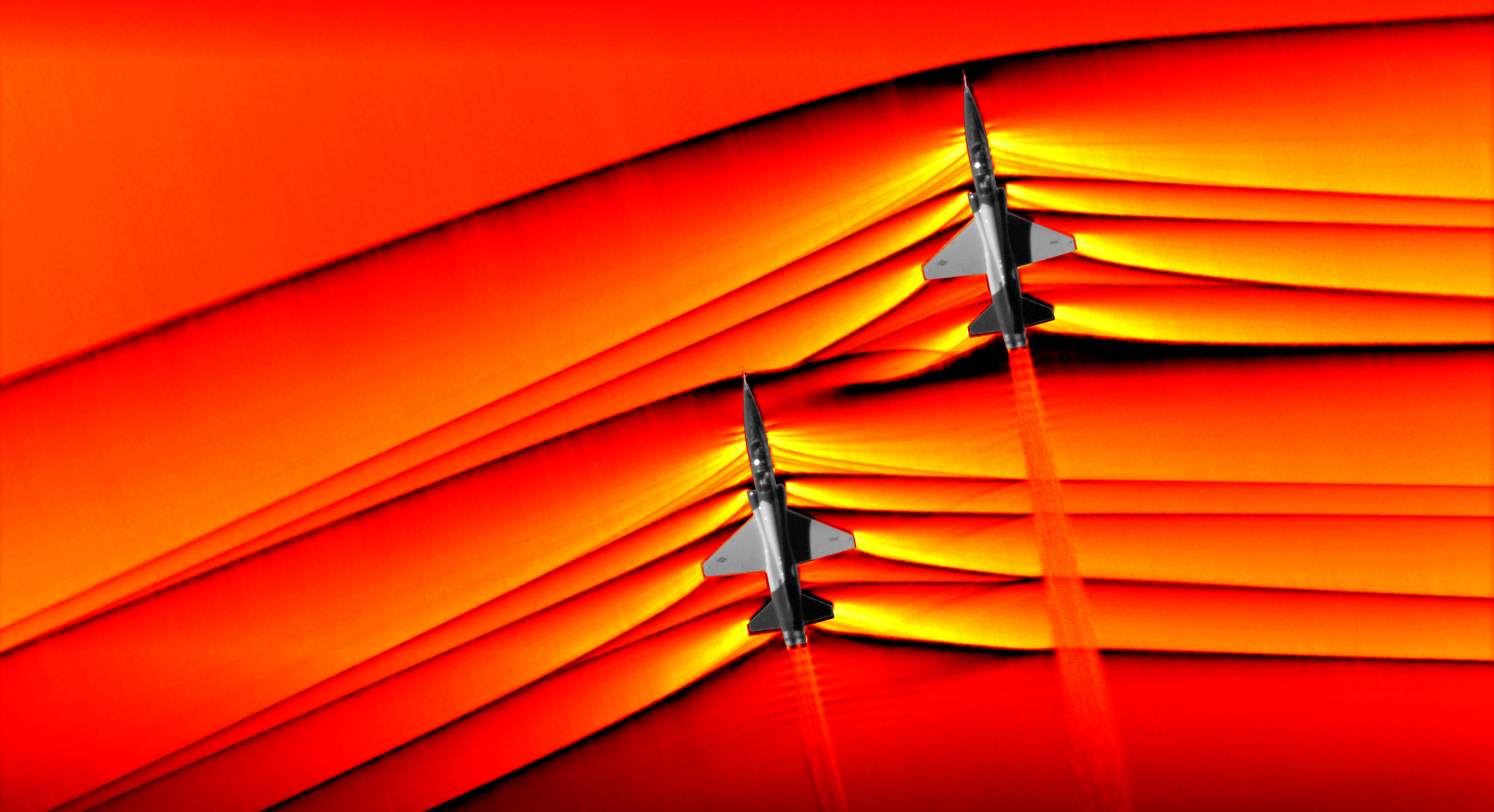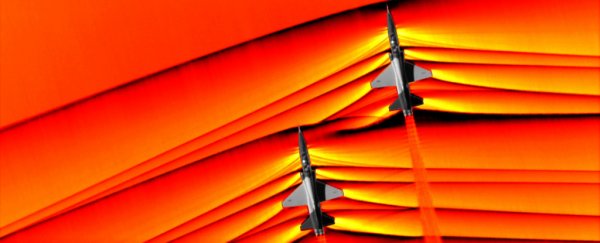For the very first time, NASA has captured the shockwaves of two supersonic jets interacting in mid-flight, and the result is so brilliant, even the researchers are amazed.
The images feature two T-38s from the US Air Force, flying at supersonic speeds less than nine metres (30 feet) apart, with a stream of shockwaves emanating from either side. There is also an image of one, single T-38 flying on what is described as a "knife's edge".
"We never dreamt that it would be this clear, this beautiful," says JT Heineck, a physical scientist at NASA's Ames Research Center.
 (NASA)
(NASA)
The images are part of an aeronautics mission at NASA that's partially dedicated to figuring out how shockwaves interact with each other, and with aircraft plumes. The knowledge could soon come in use as the space agency works towards a commercial aircraft that can fly quietly, even when it's going faster than the speed of sound.
It's a difficult challenge. Normally, when an airplane is flying through the sky, it pushes its way through molecules in the atmosphere. At the speed of sound, however, these molecules just can't get away fast enough. And so, they begin to compress, increasing the pressure at the front of the plane.
When the plane accelerates faster than the speed of sound, it then bursts through this invisible barrier of resistance, causing a rapid change in pressure that we call a shockwave.
 (NASA)
(NASA)
The problem is, shockwaves are loud. As they travel away from the vehicles, they cause an explosion, or sonic boom, that can be heard on the ground.
It's not exactly what you want from a commercial airliner flying over densely populated areas; and this is where these stunning images come in.
After more than ten years of tweaking, NASA has at last developed a system that can capture high-quality images of shockwaves in mid-flight, giving the team a chance to study their behaviour in greater detail than ever before.
"I am ecstatic about how these images turned out," says Heineck.
"With this upgraded system, we have, by an order of magnitude, improved both the speed and quality of our imagery from previous research."
But capturing these breathtaking images was no easy feat. They were taken by an imaging system aboard a NASA B-200 King Air as a pair of T-38s passed 600 metres (2,000 feet) below at supersonic speeds.
This means that all three aircrafts had to be perfectly aligned, in the exact right place at the exact right time, for a proper image to be taken.
"What's interesting is, if you look at the rear T-38, you see these shocks kind of interact in a curve," says Neal Smith, a research engineer with AerospaceComputing Inc at the Ames Research Center, describing the image below.
"This is because the trailing T-38 is flying in the wake of the leading aircraft, so the shocks are going to be shaped differently. This data is really going to help us advance our understanding of how these shocks interact."
 (NASA)
(NASA)
One day soon, the data might inform the production of the agency's X-59 Quiet SuperSonic Technology X-plane, which is currently being designed to produce shockwaves that are more like quiet rumbles than booms.
"We're seeing a level of physical detail here that I don't think anybody has ever seen before," says Dan Banks, an engineer at NASA Armstrong.
"Just looking at the data for the first time, I think things worked out better than we'd imagined. This is a very big step."
The images were created as a sub-project under NASA's Commercial Supersonic Technology project.
